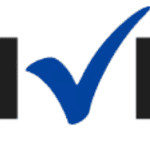Compound interest vs Simple Interest
You put in Rs 100.
Let’s imagine the annual returns are ten percent.
So, at the end of a year, you’ll have Rs 10 in returns and Rs 100 in your initial investment.
So you have a total of Rs 110 with you.
You have just re-invested Rs 100. You will receive an extra Rs 10 at the conclusion of the second year.
As a result, your total is now:
Rs 100 was the original amount.
1st year interest: Rs 10
Year 2 interest: Rs. 10
Rs 120 in total.
This is simple interest, in which you merely reinvest your initial investment.
Let’s imagine you invest the initial amount plus the interest at the end of the first year, so instead of investing Rs 100 at the end of the first year, you invest Rs 110.
So here’s the deal:
Rs 100 was the original amount.
1st year interest: Rs 10
Interest from the second year: Rs 11
121 rupees in total
This is referred to as compound interest.
As you can see, the sum is somewhat larger at the end of two years due to compounding.
However, in the case of compound interest, the returns will be considerably bigger over time! Lets look at the example of Power of Compounding

















